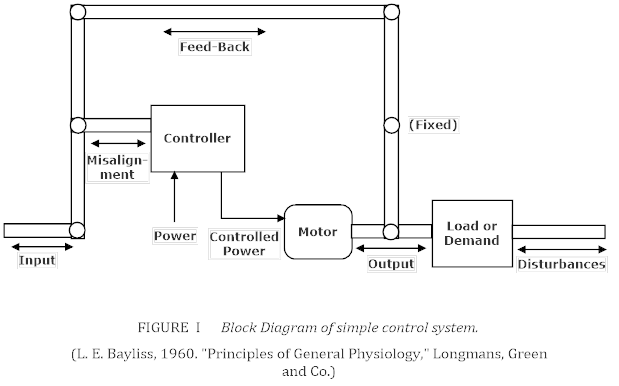[From Fred Nickols (2016.09.12.0739 ET)]
FWIW, here’s Bayliss’ diagram of a simple control system. It appears on page 6 of his book, Living Control Systems (1966) but note that the diagram is from a book published in 1960. I’m not sure I get why all the arrows are two-directional and I have no idea what (Fixed) refers to.

image0013.emz (9.8 KB)
···
From: Adam Matic [mailto:adam.matic@gmail.com]
Sent: Sunday, September 11, 2016 4:36 PM
To: csgnet@lists.illinois.edu
Subject: Re: Origins
[From Adam Matic 2016.11.9]
From that list, I’d guess Weiner and a bunch of analog computing / control theory guys, like Soroka and Korn. Bill mentions Weiner as the first time he recognized that control theory could be applied to living organisms, so cybernetics was a major influence; but the quantitative models and experimental results are what makes PCT stand out, and they were developed on classical control theory and analog computing.
Also, this is a nice one:
How Perceptual Control Theory Began: A Personal History
by Mary A. Powers
http://www.iapct.org/festschrift/mary.html
Best,
Adam
Sources mentioned in Powers, MacFarland, Clark (1960):
- Ashby, W. R. (1952). Design for a brain.
- Frank, L. K. et al. (1948). Teleological mechanisms.
- Fulton, J.F. (1949). Physiology of the nervous system
- Hebb (1954) Brain mechanisms and Consciousness
- Hebb (1949). Organization of Behavior: a Neurophysiological Theory
- Hick & Bates (1950). Human operator of Control Mechanisms
- Korn & Korn (1952). Electronic Analogue Computers.
- Shannon & Weaver (1949). The Mathematical Theory of Communication.
- Soroka (1954). Analogue methods in Computation and Simulation.
- Truxall (1955). Control System Synthesis.
- Wiener (1948). Cybernetics.
Kind Regards,
Andrew
